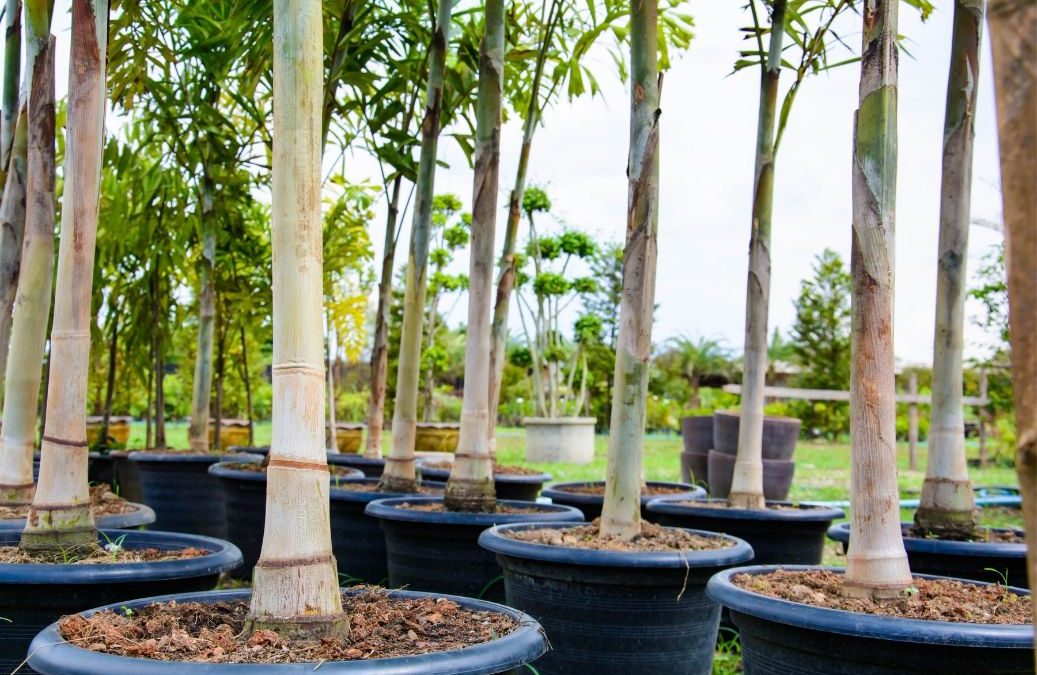Sometimes you just want instant impact in your garden and don’t want to wait years for a seed or sapling to grow into a beautiful tree. The solution could be to transplant a fully matured tree, or similarly, plant an advanced tree sourced from a tree farm or nursery.
While the process may seem relatively easy, it’s important to know each of the fundamental steps to minimise stress, ensure the tree stays healthy and thrives in its new abode.
Here we take a look at what you need to do to help get the best results when transplanting a mature tree in your yard.
1. Assess the tree and the location
Transplanting is stressful for trees, so make sure you choose a tree that is healthy and thriving to begin with as it will be much more likely to survive.
If the tree is doing well where it currently is, be sure to find a new location that will provide a similar environment, such as the amount of sunlight, quality of the soil and exposure to the elements.
Plant the tree in the same direction – facing north, south, east or west to give it the best chance.
Think about the space available – will there be enough room to accommodate the tree and its root structure? Thinking about these things before removing and re-homing will improve your chances for a successful transplant.
2. Prepare the hole for the tree
Once you’ve decided on the tree and location, pre-prepare the soil. You’ll need to dig a hole that will cater to the entire root structure of the tree.
It’s important not to suffocate the root system with insufficient space, so start by making a hole roughly one and a half times as large as the root ball of the tree as a general rule of thumb, with slanting sides, so that once the tree is planted it will have some loose soil around the roots.
3. Prepare the tree for transplanting
Very carefully remove the tree from its existing position. It’s critical that you keep as much of the root system as possible. Ideally, 25 – 30 centimetres for every 2 centimetres of trunk diameter is a good guide.
To help the tree re-establish its root system, delicately loosen some of the soil around the root ball. Try and avoid exposing the roots to direct sunlight where possible to avoid sun damage or better still, try to plant the tree on a cool, overcast day.
4. Carry out the transplant
Gently place the tree into the pre-prepared hole and backfill with soil around the tree. It’s important not to plant your tree deeper than it was previously and make sure you don’t pile soil high up around its trunk.
Keep the top of the root ball aligned with the top of your soil, so it’s covered but not too deep.
5. Water your tree
Once you’ve done the transplant, it’s critical that you thoroughly water the tree, as a tree can go into ‘transplant shock’ if it doesn’t get enough water straight away.
You will need to consistently water the soil while the tree is re-establishing its roots, even more so in warm weather. Be mindful not to overwater, aim to keep the roots moist but not soggy as this can lead to rotting of the roots.
6. Care and maintenance
It’s a good idea to mulch around the tree for several reasons. Mulching helps to regulate the temperature of the soil and maintain moisture, as well as assisting in keeping weeds and pests at bay.
However, don’t go overboard on the mulch! Keep mulch a good 5 – 10 centimetres away from the base of the trunk and keep the depth of mulch about the same.
You may also want to stake your new tree to help stabilise it and protect from strong winds. However, the stake should not cut into the bark of the tree.
A transplanted tree can take several years to recover fully, so be patient, look after it, and it will hopefully provide you with years of enjoyment.
Only take on a transplanting if you’re confident and equipped for the task. Otherwise, it’s best to call in the tree professionals to ensure the health of the tree.

